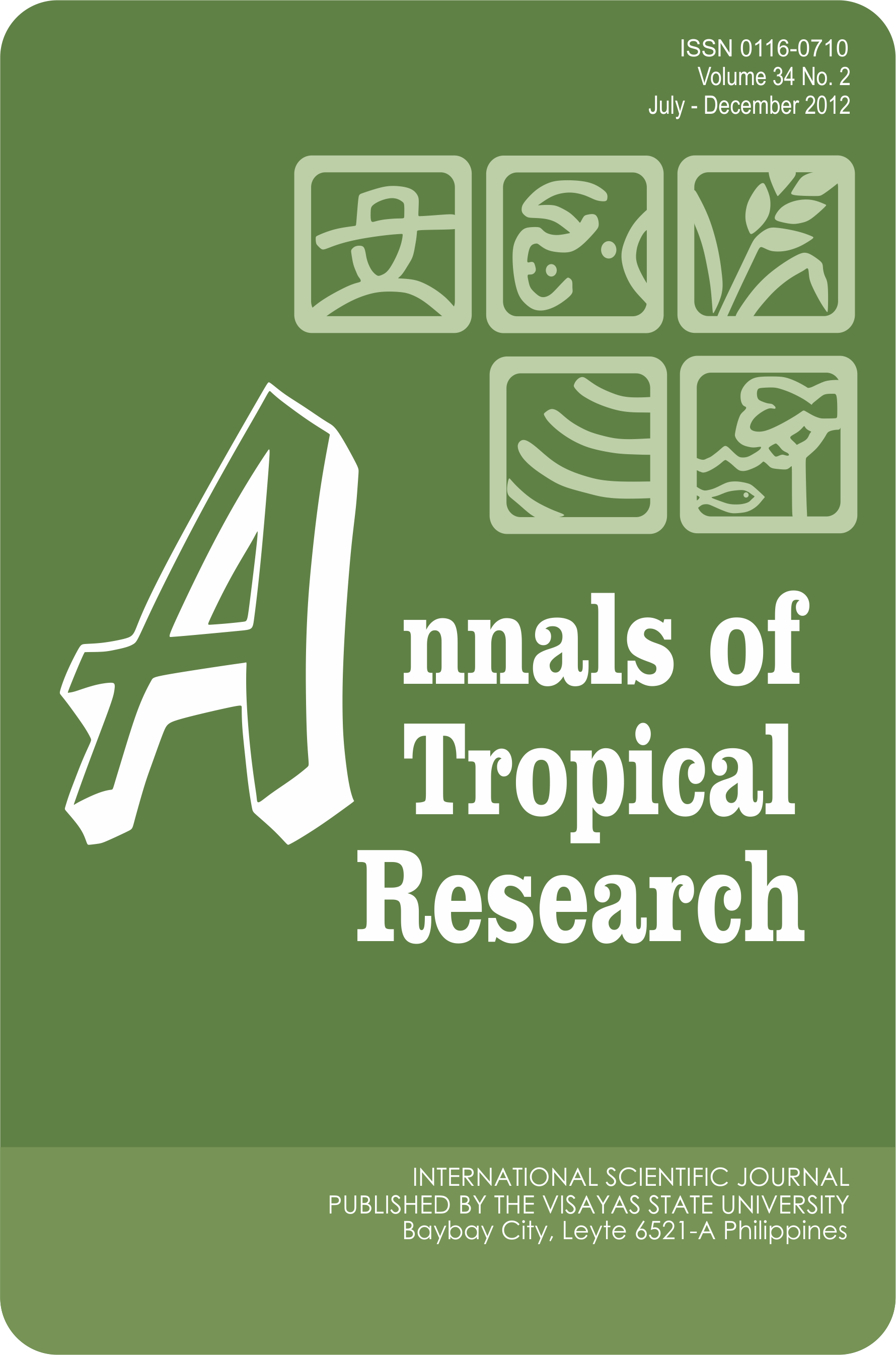Fungi from Coastal Sediments as Potential Agents in Biodegrading Used Engine Oil
DOI:
https://doi.org/10.32945/atr3427.2012Keywords:
filamentous fungi, characterization, bioremediation, oil pollutionAbstract
The use of microorganisms to decontaminate the environment loaded with oil pollutants is a beneficial option for bioremediation. This study aimed to isolate, characterize and identify oil-degrading fungi from the coastal sediments of the port area of Ormoc City, Philippines, and to evaluate and compare the oil-biodegrading capabilities of these fungi. Fungal isolates were subjected to an in-vitro biodegradation assay using used engine oil as substrate. Four species of filamentous fungi were isolated and identified down to genus level. The fungal isolates include three Aspergillus spp. and one Penicillium sp. Aspergillus spp. 1 & 2 were the most efficient in degrading and utilizing the used engine oil for growth. Aspergillus sp. 1 & 2 and Penicillium sp. had mean pH values of 6.286, 6.136 and 6.32, respectively. Highest mean percent fat loss on the media and highest mean dry weights were exhibited by Aspergillus sp. 2 (mean fat loss = 77.12% and mean dry weight = 0.24g) and Aspergillus sp. 1 (mean fat loss = 69.4% and mean dry weight = 0.21g). Filamentous fungi from the coastal sediments in the vicinity of Ormoc City port area could therefore be used as potential bioremediation agents in areas contaminated with petroleum oils.
Downloads
Submitted
Published
How to Cite
Issue
Section
License

This work is licensed under a Creative Commons Attribution-NonCommercial-ShareAlike 4.0 International License.











